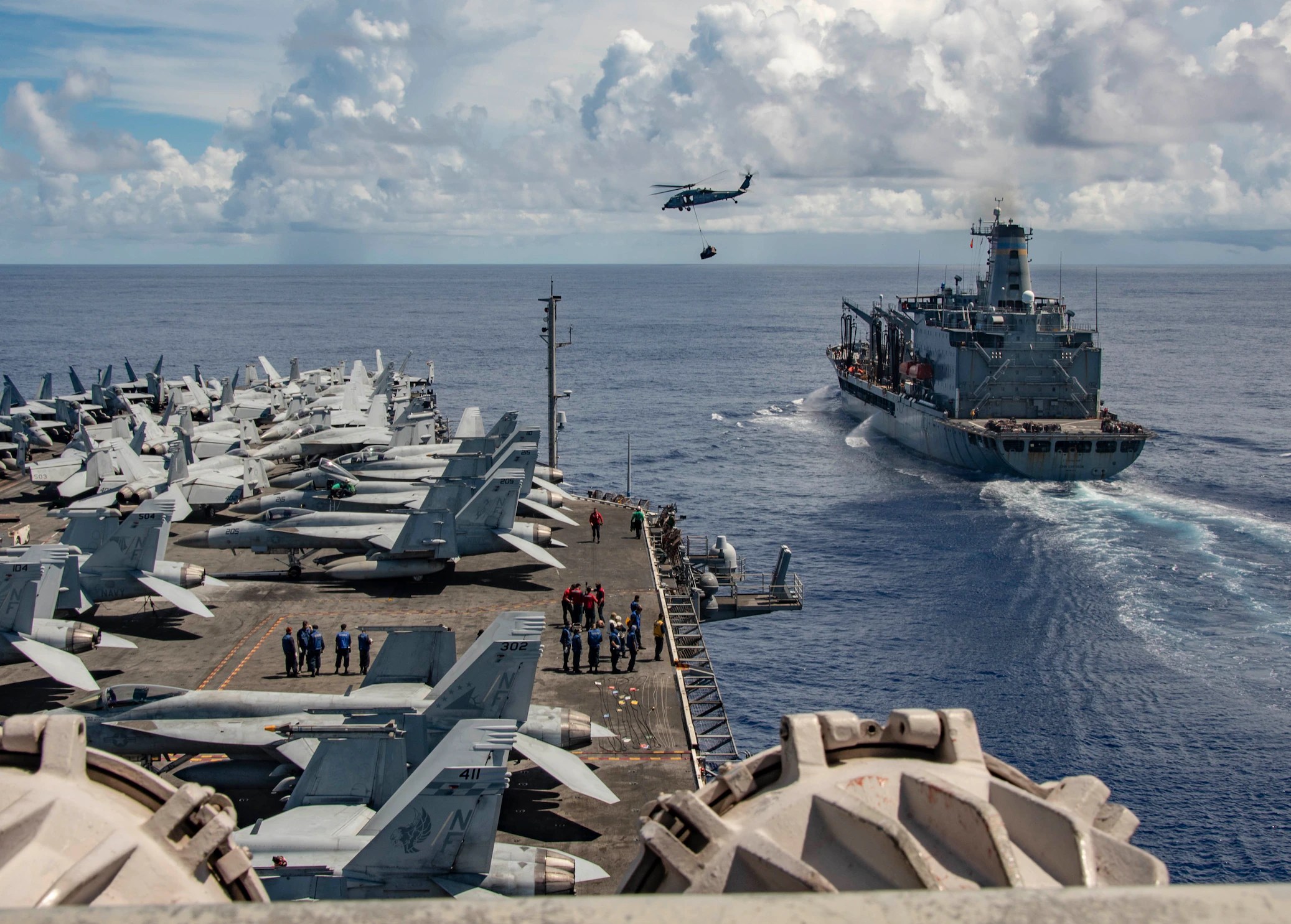Logistics and sustainment in ‘long wars’ with a peer adversary have again caught the imagination of military planners. This possibly indicates the US is preparing to clash with China in the Western Pacific.
Advertisement
Long acknowledged its inability to resupply its ships while China can comfortably keep fighting from the home front, US military commentators have raised this weakness while academics do not predict a favorable outcome for the US.
A famous statement by former USN Chief of Naval Operations (CNO) Admiral Gary Roughhead before the House Armed Services Committee in June 2020 went around on Twitter recently.
Roughhead himself was quoting a People’s Liberation Army Navy (PLAN) Admiral who had admitted to him that the “(USN’s) logistics ships were a primary target (for the Chinese)…because if he can take out logistics, he takes out the lifeblood of the fighting ships.”
The tweet by AncientSubHunter (@AncientSubHunt), a former USN anti-submarine warfare (ASW) specialist who had served on board the USS Nimitz and USS Theodore Roosevelt, sparked a debate. The thread saw other handles questioning the novelty of Roughhead’s warning, saying that what Roughhead said was nothing different and the Chinese (or any adversary) would do that.
But the ensuing discussion in the Tweet’s thread suggested that the alarm was not over the uniqueness of what the Chinese might do, but rather the persistent problem that might lead to a devastating US defeat in far east Asia.
Advertisement
Also Read: ‘The First 21st-Century Engine’: GE’s Next-Gen XA100 Fighter Jet Engine Passes Its Last Big Test
Logistics – A Bane for the US Military in the Western Pacific
The western Pacific is characterized by the “tyranny of distance,” where vast distances separate the operational area of the East and South China Seas and the First and Second Island Chains. This makes it easier for the Chinese to hit the boats that transfer fuel, food, and ammunition to US Navy’s fighting vessels.
EurAsian Times has touched upon this issue in several analyses. It is the biggest vulnerability dogging every plan the US military has come up with to counter China in the western Pacific.

The US Marine Corps and US Navy developed the Force Design 2030 Expeditionary Advanced Base of Operations (EABO), Distributed Maritime Operations (DMO), and Ghost Fleet Overlord.
The US Air Force (USAF) has the Rapid Dragon program to swarm Chinese radars and sensors with hundreds of cruise missiles launched from repurposed cargo planes. However, these concepts of operations (CONOPS) are still under development and far from ready – except for USMC’s EABO/FD-2030, which is gradually taking shape.
The ongoing war in Ukraine bared how the enemy can target long supply lines. Russia partially withdrew from Kherson to the west of the Dnieper river in November because Ukraine had begun hitting the thinly stretched Russian supply lines feeding its long-range gun and rocket artillery systems. Going by Roughhead’s statement, China will try and do just that.
Advertisement
US’ Forward Operating Bases & Supply Ships
Commodore Venugopal Vengalil (Retd) explained how logistics play out on the high seas while speaking to EurAsian Times. Pointing out how fuel is the biggest component for naval combatants, he said most navies do not allow it to drop below 25% of the total capacity, even in peaceful times.
“For example, a destroyer at sea would require to top up fuel every three days. Fleet replenishment tankers refuel ships in the middle of the sea and carry critical spares and machinery, while some also store limited ammunition stocks,” Vengalil said.
Thus, the USN’s Henry J. Kaiser-class fleet replenishment tankers would be the first targets for the PLAN when resupplying their Arleigh Burke-class destroyers on the high seas. The PLAN’s missile and fuel inventory can easily fight the US armada until the latter run dry.
“Forward operating and full-fledged bases (logistics hubs) make it easier for the US Navy. For instance, US Navy has such bases at Singapore, Yokosuka (Japan), Guam, Forward Operating Base (FOB) at Diego Garcia, and a logistics hub at Singapore, their mainstay. However, fleet support ships operate in the operational area, and their role remains critical,” Vengalil added.
US Marine Corps & US Navy Disagreement
The US Marine Corps, emerging as a frontline force to fight China inside its dense anti-access/area denial (A2/AD) bubble in an island-hopping strategy in the western Pacific, depends on the USN’s amphibious transport vessels.
However, disagreements have emerged between the two services over procurement, where the USN wants to end purchasing the San Antonio-class Landing Platform Docks (LPD). The USN hopes for an amphibious force of 24 to 28 ships, but the Marines want a 31-ship fleet.
Given China’s penchant for making strategic statements and psychologically pressuring an adversary’s leadership, it would first take out the logistics bases and replenishment ships.
This presents a grim scenario to the US military commanders, who would lose any option of sustained operations and perceive any further fighting as futile. Such insurmountable constraints on the decision-making authorities work in China’s favor, which has more diplomatic leverage in ending the war in its favor.
Advertisement